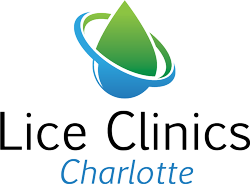What Do Parents Need to Know About Super Lice?

The world of parenthood brings a myriad of joys, challenges, and unexpected encounters—one of which might be lice. And not just any lice, we’re talking about super lice. Never heard of super lice before? Don’t worry, our lice experts are here to help with what parents need to know about super lice.
While regular lice are an old foe that parents have combated for years, there’s a new contender on the block: super lice. But what exactly are these super lice, and how do they differ from their common counterparts? As always, knowledge is power, and this blog aims to equip parents with the essential information they need to tackle this updated adversary.
Keep reading to learn more about “What do parents need to know about Super Lice?”
What Are Super Lice? Understanding the New Type of Lice
You are probably asking yourself, what in the sci-fi heck are super lice? Super lice are actually not a new species of lice, but rather a strain of head lice that have developed resistance to traditional over-the-counter treatments that contain pyrethroids, the chemicals often used to combat lice infestations. This makes them get harder to get rid of, which is a bummer because just like regular lice, they feed on human blood and can cause itching and discomfort.
The Origin of Super Lice
Super lice didn’t just appear overnight. They have gradually emerged over the past few decades. As head lice were exposed to common over-the-counter treatments, those that had natural resistance to these treatments survived and reproduced. Over time, a greater proportion of the lice population became resistant, leading to the prevalence of what we now call “super lice.”
The Science Behind Lice Resistant to Treatments
Pyrethroids, which are synthetic versions of pyrethrins (natural insecticides derived from chrysanthemum flowers), have been the active ingredients in many lice treatment products for years. These chemicals target the nervous system of the lice, ultimately leading to their paralysis and death.
However, with repeated exposure, mutations occurred in some lice populations, which made them less susceptible to the effects of pyrethroids. This mutation is primarily a change in the lice’s nerve cell channels, preventing pyrethroids from acting on them. Consequently, these mutated lice survived treatments and passed on their resistant genes to their offspring.
Are Super Lice More Dangerous Than Regular Lice?
No, super lice are not more dangerous than regular lice. It’s important to note that super lice are not more “dangerous” or harmful than regular lice. They don’t carry diseases, and their bite isn’t more potent. The primary concern with super lice is their resistance to common treatments, which can make eradicating an infestation more challenging.
Addressing Misconceptions About Super Lice
There are many myths and misconceptions surrounding super lice. Here are a few common super lice misconceptions clarified:
Super Lice Size and Appearance:
Despite the “super” moniker, super lice aren’t larger or differently colored than other lice. In fact, they look the same as regular lice. You would not know that you have super lice just by looking at the lice.
Transmission of Super Lice
Super lice are transmitted in the same ways as regular lice: primarily through direct head-to-head contact. This means one of the best treatments for super lice is prevention!
Does Hygiene and Cleanliness Affect the Likelihood of Getting Lice?
The presence of super lice, like regular lice, isn’t indicative of poor hygiene. Lice infestations can affect anyone, regardless of how often they wash their hair.
The Future of Lice Treatments
The emergence of super lice underscores the need for ongoing research into new and effective lice treatments. As with antibiotic-resistant bacteria, the overuse or misuse of treatments can lead to increased resistance.
Therefore, it’s crucial to use treatments as directed and only when necessary. Researchers are exploring alternative methods, including novel chemical treatments, natural remedies, and even biological approaches like enzymes or bacteria that could target lice.
How to Detect Super Lice
Detecting super lice is similar to identifying regular lice. However, it’s crucial to know what to look for and to differentiate between lice and other conditions that might mimic their symptoms.
Visual Inspection
Adult lice are about the size of a sesame seed and tend to move quickly through the hair. While their color can vary, they are often greyish-white or tan. Nits (lice eggs) are oval and usually yellow or white. They are firmly attached to hair shafts close to the scalp, particularly around the ears and the nape of the neck.
What are the Physical Symptoms of Lice?
Itching is the most common symptom of a lice infestation, resulting from an allergic reaction to lice bites. However, not everyone will itch, especially when infested for the first time. Other signs can include a feeling of something moving in the hair, irritability, and difficulty sleeping (since lice are more active in the dark).
Specialized Combs for Lice
Fine-toothed nit combs can be used on wet hair to help detect lice and nits. Running the comb from the scalp to the end of the hair, and then closely examining the comb’s teeth under good light can help in spotting the tiny pests.
Prevention is Key
The best way to deal with super lice, like all lice, is prevention. When it comes to lice, especially super lice, an ounce of prevention is worth a pound of cure. Understanding and implementing preventive measures can save families considerable time, money, and stress. There are several key reasons why prioritizing prevention is essential to combating lice infestations.
The Spread of Lice is Quick
Lice can spread rapidly, especially in settings where individuals are in close proximity, like schools, family gatherings, or sleepovers. One infested child can inadvertently lead to multiple infestations among friends and family. Within a short period of time numerous heads can be infested with lice.
Treatment Resistance
With the rise of super lice, many traditional over-the-counter treatments are becoming less effective. Preventing an infestation in the first place can help families avoid the trial-and-error of finding an effective treatment.
Emotional Toll of Having Lice
Beyond the physical discomfort, having lice can cause psychological stress for both children and parents. Children might feel embarrassed, and parents often feel overwhelmed or guilty, even though lice are not a sign of poor hygiene.
Economic Strain
Treating lice, especially recurrent or resistant infestations, can be expensive. Multiple treatments, coupled with the costs of replacing infested items or missing work, can quickly add up.
Consistent Vigilance
Periodic head checks, especially after your child has been in a group setting, can help detect and address infestations early. Early detection often means fewer lice and a quicker resolution.
Awareness of How Lice Spreads
Educating your family about lice and how they spread can be instrumental in prevention. This includes understanding the importance of not sharing personal items like combs, hats, and headphones.
Using Natural Deterrents for Lice
Some individuals swear by natural lice deterrents like tea tree oil, eucalyptus oil, or lavender oil. Incorporating a few drops into shampoos or sprays might act as a repellent, although more scientific research is needed to confirm their efficacy.
Seek Professional Lice Treatment at Lice Clinics Charlotte
In an age where super lice are becoming more prevalent, it’s reassuring to know that cutting-edge, safe, and effective lice treatments are readily accessible to those in need. Super lice may sound daunting, but with the right knowledge and tools at our disposal, we can tackle them effectively.
Lice Clinics Charlotte provides a beacon of hope for anyone in Charlotte, NC, and the surrounding areas. Our signature Airtral treatment stands out as a revolutionary method, guaranteeing complete lice removal without resorting to harsh chemicals or repeat visits.
Don’t let lice disrupt your family’s peace; visit our website and request a lice treatment appointment today.
